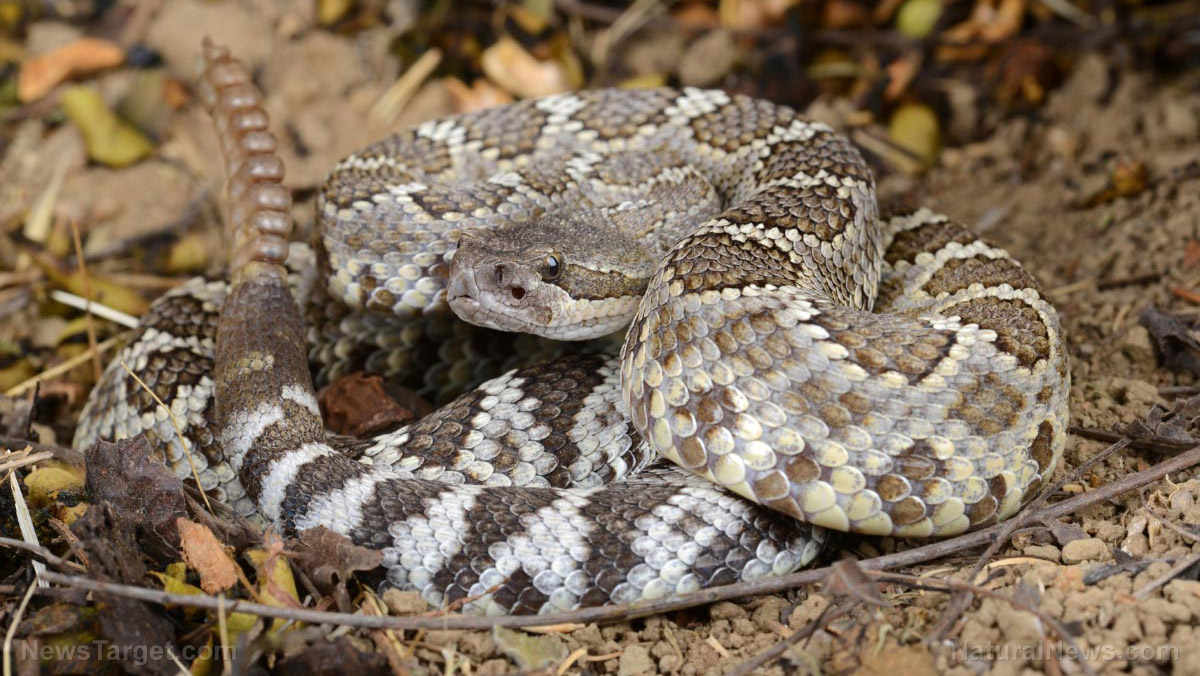Could “miracle” molecule make humans bulletproof against snake bites?
01/02/2019 / By Rhonda Johansson

Scientists have isolated a specific protein in snake venom that induces internal bleeding. By targeting this protein with a specific antibody, researchers were able to prevent cell-to-cell adhesion which would cause hemorrhage. Researchers found that animals resistant to hemorrhage-inducing venom carried a variation of the protein which presumably protects them from death. While still in its early stages of understanding, authors of the study are optimistic that this could lead to better treatment methods for snake bites. Dr. Satohiko Araki, the senior author, explained, “We hope this study contributes to protecting against snake venom toxicity and elucidating the mechanisms involved.”
Snake venom metalloproteases (SVMPs) are part of the disintegrin and metalloprotease (ADAM) family of proteins. These SVMPs elicit venom-induced hemorrhage by disrupting cell adhesion and relocation. Scientists, however, have never been clear on which protein SVMPs target or where they cleave disruptions. In the study published in The FEBS Journal, authors identified a protein they called vascular apoptosis-inducing protein 1 (VAP1), a SVMP, which manipulated essential cell-to-cell junctions in the cytosol. Put simply, VAP1 cleaved the lipoproteins responsible for cell retention. Researchers used an antibody against the peptide and saw that it blocked hemorrhage in mice by eliminating the cleavage site involved in the formation of the protein’s active form. These findings led to two conclusions: the first, that there are specific physiological targets of ADAMs and second, SVMP disruptions to these targets causes cell-to-cell adhesion and hemorrhage. These identifications could potentially result in new avenues for snake bite treatments.
Mother Nature's micronutrient secret: Organic Broccoli Sprout Capsules now available, delivering 280mg of high-density nutrition, including the extraordinary "sulforaphane" and "glucosinolate" nutrients found only in cruciferous healing foods. Every lot laboratory tested. See availability here.
Snake venom 101
SVMPs are considered the most abundant toxin among the Viperidae family. They have long been known as primary factors for hemorrhage but their exact mechanics have yet to be completely understood. In fact, Jay W. Fox, Professor and Associate Dean of Research, Microbiology, Immunology, and Cancer Biology at the University of Virginia School of Medicine, who helped coined the term a few years ago, stated in an article in Toxins that, “there are still lingering aspects of SVMPs that deserve study. Certainly their evolution and gene structure merit additional investigation. Also, higher resolution understanding of substrate specificity as associated with functional activity is still of some interest.”
Fox adds that venoms — and their associated effects — are both simple and complex. The hemorrhagic SVMPs disrupt basement membranes of capillaries yet the toxic effects of venom involve a collective action of different components. Thus, he, along with other toxicologists, have always addressed snake venom treatment using a systematic approach rather than a simple collection of unilateral therapies. This new study further adds to the industry’s understanding of how the toxins in snake venom work, which helps in the holistic view of snake bite treatments.
Professor José María Gutiérrez of the University of Costa Rica, San José, who has written several studies on snake venom and its toxicity, said in the same interview with Fox that, “the understanding of the structure-function of many snake toxins has paved the way, as has the study of other animal toxins, to the discovery of promising leads which may derive into new drugs for the treatment of a variety of diseases.”
Gutiérrez went on to release another paper in Toxicon which observed the current international network in the development of better antivenoms. To date, while antivenom treatments are effective, scientists still say that more research is needed to fully grasp how snake toxins operate.
A 2008 article on Telegraph stated that poisonous snakes kill around 90,000 people a year around the world.
Read more fascinating articles on snake venom at Remedies.news.
Sources include:
Tagged Under: research, snake venom, snake venom treatment



















